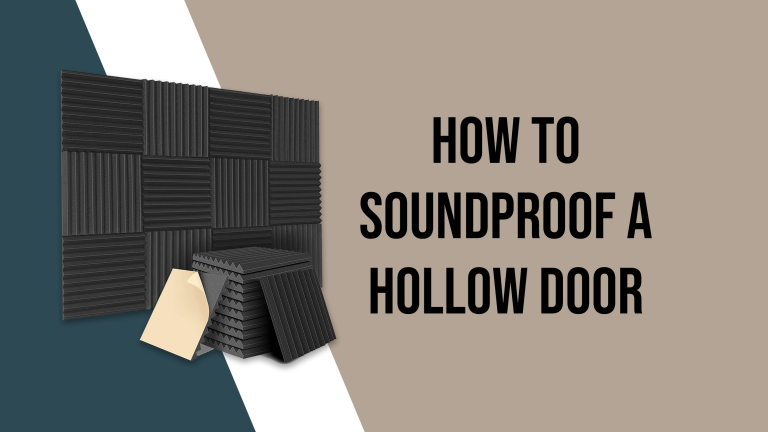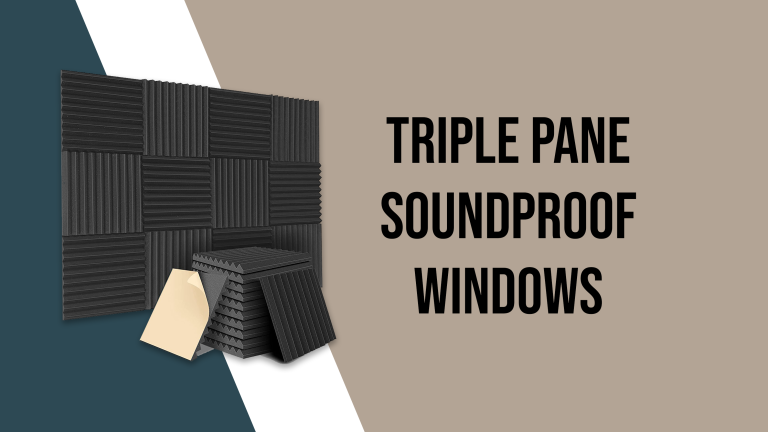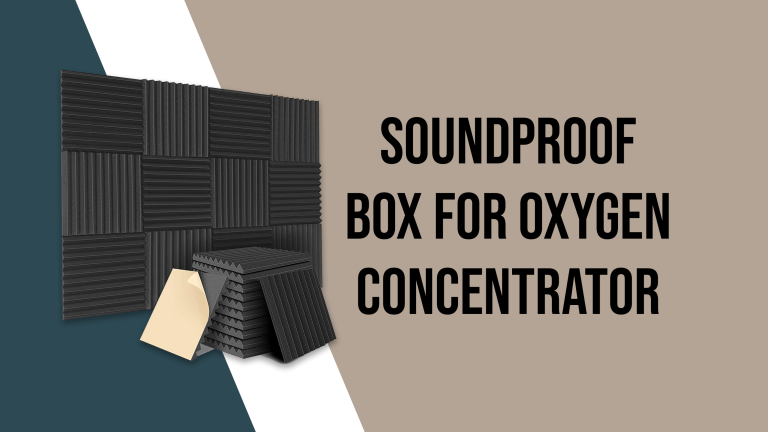How to Soundproof Shed Studio
A soundproof shed studio is an ideal solution for musicians and other creative professionals who need a quiet space to work and practice their craft. The soundproofing capabilities of a shed studio allow for a high-quality recording environment that is isolated from external noise and interference.
In this article, we will discuss the benefits of a shed studio, the features to look for when selecting one, and some tips on how to build a soundproof shed studio.
You can Soundproof Box For Oxygen Concentrator. You may also want to know about Hexagon Soundproof Panels and Soundproof Box For Radon Fan.
How to Soundproof Shed Studio
The cost of soundproofing a shed can vary, but it can be done cheaply using materials such as egg cartons, old blankets, and foam mats. Concrete is the most soundproof building material, and fiberglass insulation is a popular choice for soundproofing a studio shed. Soundproofing can reduce noise, but complete soundproofing is often difficult to achieve.
Why Choose a Soundproof Shed Studio?
There are several reasons why it may be the best choice for your recording needs.
- Firstly, soundproofing helps to eliminate external noises that can interfere with your recording, such as traffic or other people in your household. This can result in a cleaner and more professional recording that is free from unwanted noise.
- Secondly, a shed studio can be a cost-effective option for those who cannot afford to rent a professional recording studio. With the right equipment and setup, a shed studio can provide similar results to a professional studio, while saving you money on rent.
- Finally, a shed studio is a versatile option that can be customized to your specific needs. You can choose the size, shape, and features of your shed studio to create the perfect environment for your creative pursuits.
Features to Look for in a Soundproof Shed Studio:
When selecting a shed studio for your recording needs, there are several features to consider.
- Firstly, the shed should be constructed with soundproofing in mind. This can include features such as double-glazed windows, insulated walls and ceilings, and airtight doors.
- Secondly, the shed should be well-ventilated to ensure that you do not overheat during long recording sessions. This can be achieved through the use of ventilation fans, air conditioning units, or simply by leaving a window or door open.
- Thirdly, the shed should have sufficient power outlets to accommodate your recording equipment. This may require the installation of additional electrical wiring or outlets, depending on your setup.
- Finally, the shed should be equipped with adequate lighting to ensure that you can see and operate your equipment effectively. This may require the installation of additional lighting fixtures or the use of natural light sources.
How To Build A Soundproof Shed Studio?
Once you have selected your shed studio, it’s time to set it up for recording. Here are some tips to get you started:
Choose the Right Location:
Select a location for your shed studio that is away from any external noise sources, such as roads or highways. This will help to ensure that your recordings are free from unwanted noise.
Install Your Equipment:
Set up your recording equipment in a way that maximizes the use of space in your shed studio. This may require the installation of shelves, cabinets, or other storage solutions to keep your equipment organized.
Soundproof the Interior:
Consider adding additional soundproofing materials to the interior of your shed studio, such as acoustic foam or insulation. This can help to reduce echo and improve the quality of your recordings.
Test Your Setup:
Before you start recording, test your setup to ensure that everything is working as intended. This may involve running a test recording to check for any issues or adjustments that need to be made.
How to Soundproof a Shed?
To soundproof a shed, there are a few things you can do. First, consider adding insulation to the walls, ceiling, and floor. This will help absorb sound and prevent it from leaking out of the shed. You can also add weather-stripping to the door to seal any gaps. Additionally, consider adding mass-loaded vinyl or acoustic foam panels to the walls to further reduce sound transmission. Finally, try to keep the shed away from any nearby structures or buildings to minimize noise pollution.
Band Room Acoustics:
The acoustics of a band room can greatly affect the sound quality of the music being played. To optimize the acoustics of a band room, consider using diffusers and absorbers to control the reflections and reverberations of sound. Adding bass traps to corners can help reduce low-frequency buildup, and using acoustic ceiling tiles can help control sound from above. It’s also important to ensure that the room is properly sized for the number of musicians and instruments being used.
Band Room Sound Panels:
Sound panels can be a great addition to a band room to help control the acoustics. These panels are typically made of acoustic foam or other sound-absorbing materials and can be placed on walls, ceilings, or even floors. They work by absorbing sound waves and preventing them from reflecting back into the room, reducing echoes and improving clarity. Sound panels can also be used to create a more visually appealing space, as they come in a variety of colors and styles.
DIY Sound Isolation Clips:
Sound isolation clips can be used to improve the soundproofing of walls and ceilings in a music studio or other noisy space. These clips work by decoupling the drywall or other surface from the structure of the building, which helps prevent sound transmission. While it’s possible to purchase pre-made sound isolation clips, it’s also possible to make them yourself using basic materials such as rubber or neoprene. DIY sound isolation clips can be a cost-effective way to improve sound isolation in a home music studio or other space.
Garden Music Studio:
A garden music studio is a dedicated space for musicians to practice and record music, located in a garden or outdoor area. These studios can be custom-built to suit the needs of the musician and can be designed to provide optimal acoustics and soundproofing. A garden shed recording studio can be a great option for musicians who need a dedicated space to practice and record, but who don’t have space inside their home for a music and recording studio.
Modular Practice Room:
A modular practice room is a portable, modular structure designed to provide soundproofing and acoustics for musicians. These structures can be assembled quickly and easily and can be moved or reconfigured as needed. Modular practice rooms can be a great option for musicians who need a dedicated space to practice or record but who don’t have the space or budget for a traditional music studio.
Music Studio in Storage Unit:
A soundproof backyard music studio in a storage unit is a cost-effective option for musicians who need a dedicated space to practice and record. Storage units can be rented for a fraction of the cost of a traditional music studio and can be customized to provide optimal acoustics and soundproofing. When setting up a music studio in a storage unit, it’s important to ensure that the unit is properly ventilated and that electrical needs are met.
Storage Unit Recording Studio:
A storage unit recording studio is a music studio located in a rented storage unit that is designed specifically for recording music. These studios can be customized with soundproofing materials, acoustic treatments, and recording equipment to provide a professional recording environment. While storage unit recording studios can be a cost-effective option, it’s important to ensure that the unit is properly secured and that all necessary permits and licenses are obtained before beginning recording operations.
Moreover, you need to soundproof the storage unit before turning it into a recording studio. A soundproof storage unit will provide better acoustics and minimize echo. Read on to learn how to soundproof a storage unit.
How to soundproof a storage unit?
The thin walls of a storage unit can’t stop any noise from coming in or going out. For recording, the acoustics and echoes are very bad as well. That’s why soundproofing a storage unit is necessary if you want to practice music or turn it into a recording studio.
Here are a few methods you can use to soundproof your storage unit.
- Add Mass To The Walls
Even the best storage units have pretty thin walls that fail to stop and absorb sound waves. So, the first thing you have to do is to add some mass to the walls. This can be done by insulating the walls with sound-dampening materials like mass-loaded vinyl, acoustic foam, or some soundproof curtains.
- Soundproof Paint
Contrary to popular belief, soundproof paint works. It is a costly method, but if you are having your storage unit painted, go for soundproof paint to get a fresh look and add a layer of sound resistance to your storage unit walls.
- Drop Ceiling & Floor Carpeting
Install a fake ceiling in your storage unit to reduce noise transmission through the ceiling. You can hire a ceiling contractor or add a fake ceiling yourself by hanging some cardboard. Similarly, all the equipment sound and vibrations get amplified on the rock-solid floor of storage units. Using thick carpets and rugs on the floor, especially under your music equipments, can reduce the vibrations and the noise as well.
How to Soundproof Wooden Garden Room?
Soundproofing a wooden garden room can be done using various methods, including:
Add Insulation:
Install insulation material in the walls, ceiling, and floor of the garden room. Insulation helps to reduce noise by absorbing sound waves.
Use Acoustic Panels:
Hang acoustic panels on the walls of the garden room. Acoustic panels are designed to absorb sound waves and reduce echo.
Use Weather Stripping:
Seal all gaps in the garden room using weather stripping tape or caulk. This helps to prevent external noise from entering the room.
Install Double-Glazed Windows:
Install double-glazed windows to prevent external noise from entering the room.
Use Soundproof Curtains:
Hang soundproof curtains on the windows and doors of the garden room. These curtains are designed to absorb sound waves and reduce noise.
Use Soundproofing Paint:
Apply soundproofing paint to the walls of the garden room. This paint contains special materials that help to absorb sound waves and reduce noise.
By using these methods, you can significantly reduce the amount of noise that enters or exits your wooden garden room.
Why Lightweight Wooden Structures are not Good for Soundproofing?
Lightweight wooden structures are not good for soundproofing because they do not have enough mass or density to absorb and block sound waves effectively. Sound waves travel through the air and can easily vibrate lightweight structures, such as those made from thin plywood or low-density fiberboard.
In order to block or absorb sound waves, a material needs to be heavy and dense. Materials like concrete or brick are much better at soundproofing because they have a higher mass and density, which allows them to absorb and block sound waves more effectively.
Additionally, lightweight wooden structures tend to have gaps and spaces that allow sound to pass through. These gaps can occur between the wooden panels or around windows and doors, and they can significantly reduce the effectiveness of any soundproofing measures taken.
While it is possible to soundproof lightweight wooden structures to some degree, they will never be as effective as materials with higher mass and density. If you are building a structure that requires significant soundproofing, it may be better to choose a material that is better suited to this purpose.
Why a Garden Shed doesn’t make a Good Starting Point for a Music Studio?
While While a garden shed music studio may seem like an attractive option for a music studio due to its affordability and ease of construction, it may not make a good starting point for a professional-grade music studio. Here are a few reasons why:
Size Limitations:
Most garden sheds are small in size, which means that there may not be enough space for all the necessary equipment and instruments in a music studio. This can lead to a cramped and uncomfortable working environment, which can negatively impact the quality of music production.
Poor Acoustics:
Garden sheds are typically constructed using lightweight materials such as wood, which can result in poor acoustic performance. The lack of proper sound insulation and treatment can cause sound to leak in and out of the studio, leading to unwanted echoes, reverb, and external noise interference.
Limited Electrical Capabilities:
Garden sheds are not designed to handle the high electrical demands of a professional music studio. You may need to install additional electrical outlets and wiring, which can be expensive and time-consuming.
Lack of Ventilation:
A garden shed may not provide adequate ventilation, which can result in a buildup of heat and humidity. This can damage musical equipment and negatively impact the overall quality of the studio environment.
Limited Resale Value:
If you decide to sell your home in the future, a garden shed converted into a music studio may not add much value to the property. It may even be considered a negative selling point if the prospective buyers are not interested in music production.
Overall, while a garden shed may seem like an attractive starting point for a music studio, it may not provide the necessary space, acoustics, electrical capabilities, ventilation, and resale value that a professional-grade music studio requires.
FAQ’s
How do you soundproof a shed studio?
To soundproof a shed studio, you can use various methods such as adding insulation to the walls, ceilings and floors, using double-glazed windows, sealing all gaps, and adding soundproof curtains or acoustic panels.
Is it possible to soundproof a shed?
Yes, it is possible to soundproof a shed by using insulation, double-glazed windows, soundproof curtains or acoustic panels, and sealing all gaps to prevent external noise from entering the shed.
How much does a soundproof shed cost?
The cost of a soundproof shed can vary depending on the size, location, and level of soundproofing required. It can range from a few hundred dollars to several thousand dollars.
How can I soundproof my studio cheaply?
You can soundproof your studio cheaply by using materials such as egg cartons, old blankets, and foam mats. You can also use weather stripping tape to seal gaps and cover windows with thick curtains or blankets.
What is the cheapest way to soundproof shed?
The cheapest way to soundproof a shed is by using insulation, sealing all gaps, and adding soundproof curtains or acoustic panels. You can also use weather stripping tape to seal gaps and cover windows with thick curtains or blankets.
Does studio foam reduce noise?
Yes, studio foam can reduce noise by absorbing sound waves and reducing echo in a room. It is a popular choice for soundproofing recording studios and other similar spaces.
Does soundproofing block outside noise?
Soundproofing can block outside noise to some extent by reducing the amount of sound that enters a space. However, complete soundproofing is often difficult to achieve, and some noise may still be heard.
What is the most soundproof building material?
The most soundproof building material is concrete. It is dense and heavy, which makes it difficult for sound waves to pass through.
Can you soundproof against loud neighbors?
Yes, you can soundproof against loud neighbors by adding insulation to the walls, ceilings and floors, using double-glazed windows, and sealing all gaps to prevent external noise from entering your space.
How much does it cost to soundproof a studio?
The cost of soundproofing a studio can vary depending on the size, location, and level of soundproofing required. It can range from a few hundred dollars to several thousand dollars.
What is the best insulation for studio shed?
The best insulation for a studio shed is typically fiberglass insulation. It is affordable, easy to install, and provides excellent soundproofing properties.
How do you soundproof a small building?
To soundproof a small building, you can use insulation, double-glazed windows, seal all gaps, and add soundproof curtains or acoustic panels. You can also use weather stripping tape to seal gaps and cover windows with thick curtains or blankets.
Do soundproof walls absorb sound?
Yes, soundproof walls can absorb sound by using materials such as acoustic panels or foam. This helps to reduce echo and improve the overall sound quality in a room.
What can I use instead of soundproof?
Instead of using traditional soundproofing methods, you can use materials such as carpets, curtains, and blankets to absorb sound and reduce echo in a room. You can also use furniture or bookshelves to help absorb sound waves.
How can you soundproof an area without a door?
To soundproof an area without a door, you can use soundproof curtains or acoustic panels to create a barrier that absorbs sound waves. You can also use weather stripping tape to seal gaps and cover windows with thick curtains or blankets.
Conclusion:
It can be an excellent option for musicians and other creative professionals who need a quiet space to work and practice their craft. By selecting a shed with the right features and setting it up properly, you can create a high-quality recording environment that is isolated from external noise and interference. Whether you’re a professional musician or just starting out, it can help you take your recordings to the next level.








